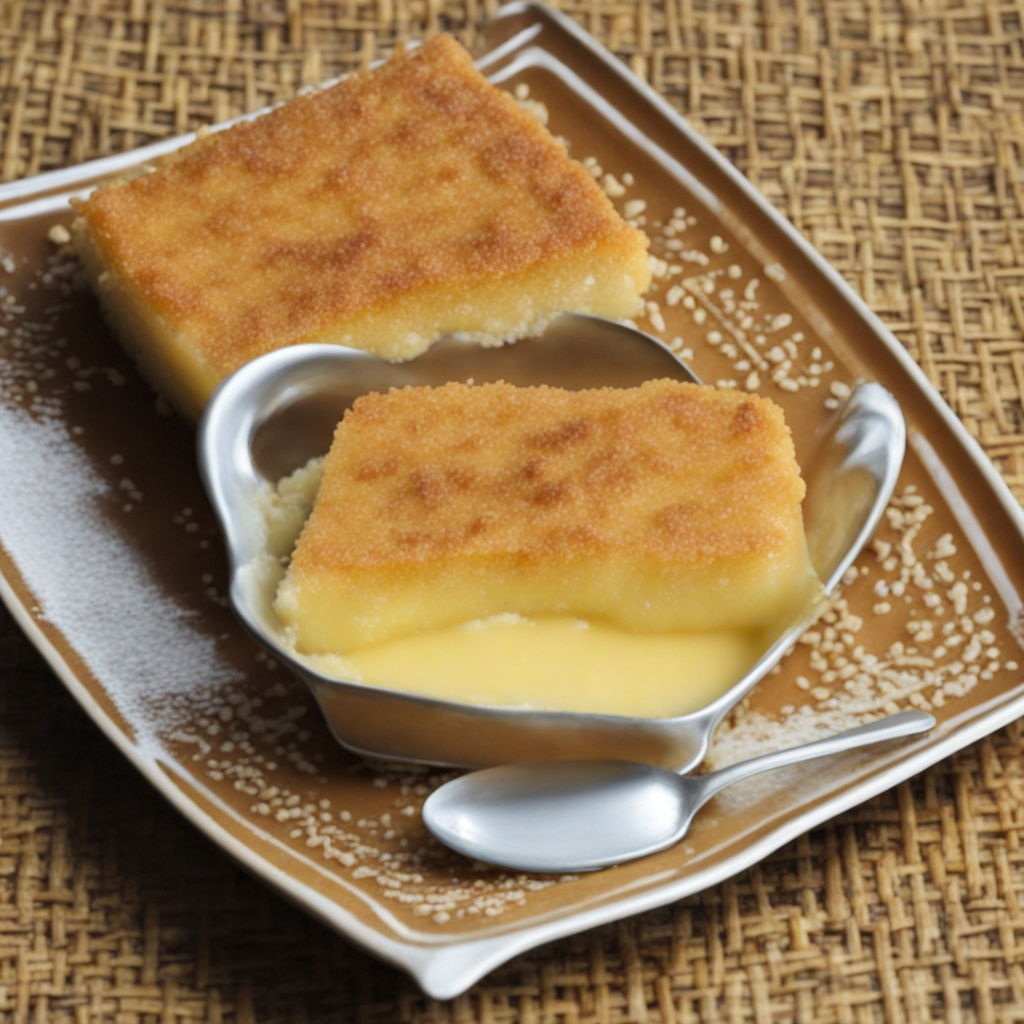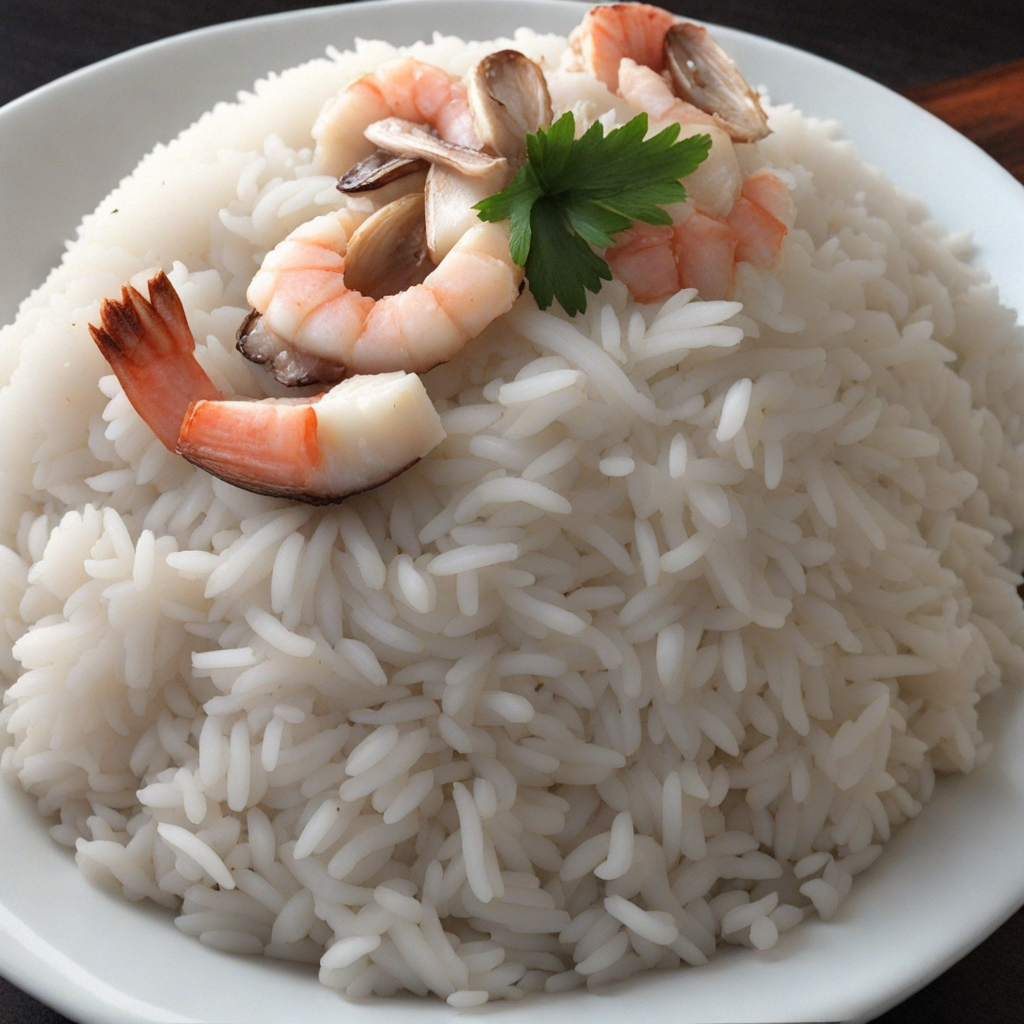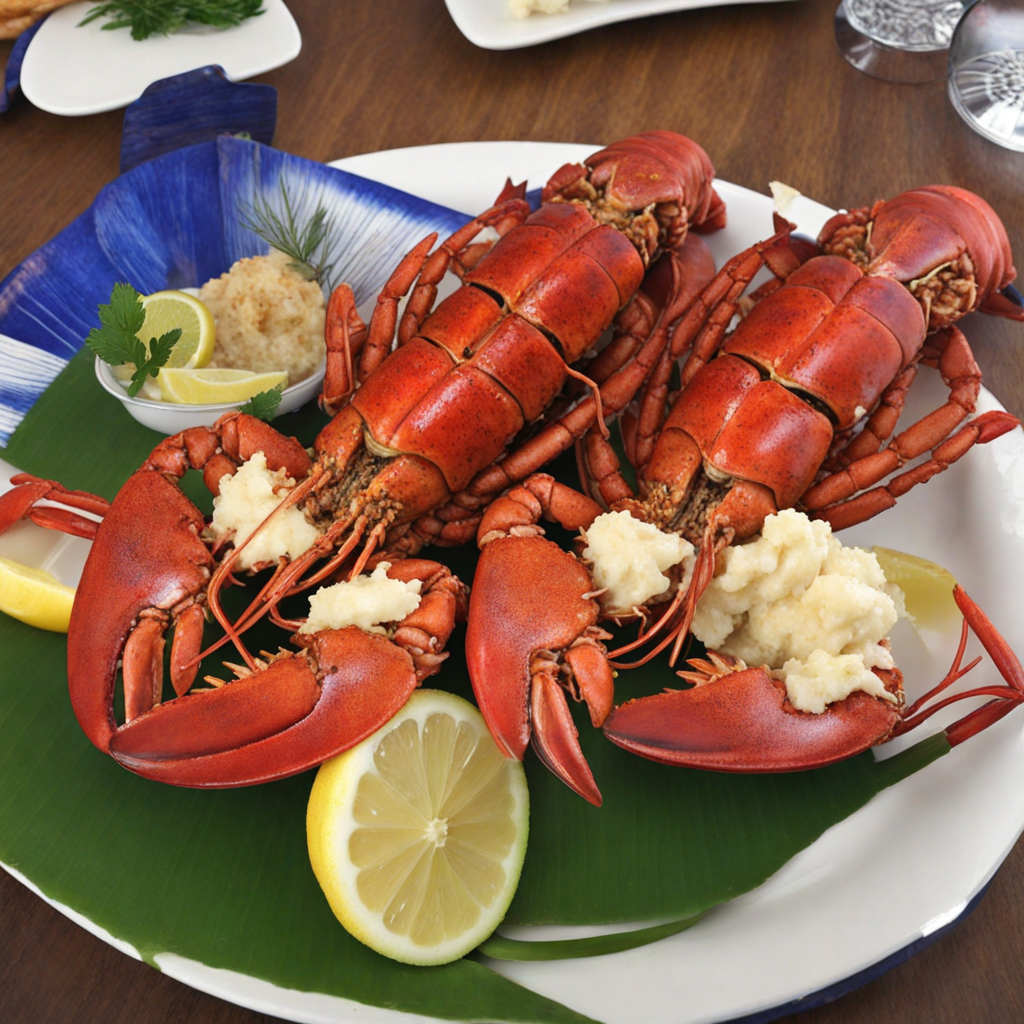Cassava Pudding
Cassava Pudding is a traditional delicacy from the Solomon Islands, showcasing the island's rich culinary heritage. This delightful dish is primarily made from grated cassava, a starchy root vegetable that is a staple in many tropical regions. The pudding is typically mixed with coconut milk, which adds a creamy texture and a subtle sweetness, making it a comforting treat. The combination of cassava and coconut creates a unique flavor that is both earthy and rich, allowing the natural sweetness of the cassava to shine through while the coconut enhances its overall taste profile. To prepare Cassava Pudding, the grated cassava is often blended with sugar, vanilla, and sometimes a hint of nutmeg or cinnamon for added warmth and depth. The mixture is then poured into a baking dish and baked until it sets, developing a slightly crispy top while remaining moist and tender inside. The aroma wafting from the oven is irresistible, as the sweetness of the coconut and the warm spices create a welcoming scent that makes it hard to resist sampling the dish before it’s fully cooled. Enjoyed as a dessert or a snack, Cassava Pudding can be served warm or chilled, and it often appears at celebrations and family gatherings in the Solomon Islands. Its delightful texture, with the slight chewiness of the cassava and the creaminess of the coconut, makes every bite a satisfying experience. This pudding not only offers a taste of the islands but also represents the communal spirit of sharing and enjoying food together, making it a must-try for anyone looking to explore the diverse flavors of the Solomon Islands.
How It Became This Dish
The History of Cassava Pudding in the Solomon Islands #### Introduction Cassava pudding, a beloved dish in the Solomon Islands, is not merely a culinary delight but a reflection of the rich cultural heritage and agricultural practices of the region. This starchy treat, made primarily from cassava root, has played a significant role in the diets of the Solomon Islanders and serves as a symbol of community and tradition. #### Origins of Cassava Cassava (Manihot esculenta), a root vegetable native to South America, was introduced to the Solomon Islands and the broader Pacific region by early Polynesian navigators and traders. It is believed that cassava made its way to the islands around the 16th century, facilitated by the movement of people and goods across the vast Pacific Ocean. The plant thrived in the tropical climate of the Solomon Islands, where it quickly became a staple crop due to its adaptability and resilience. Cassava is particularly valued for its high carbohydrate content and ability to grow in poor soil conditions, making it a reliable food source for communities. Its introduction marked a significant shift in the agricultural landscape of the Solomon Islands, complementing traditional crops such as taro and yam. #### Cultural Significance In the Solomon Islands, cassava is more than just a food source; it is woven into the cultural fabric of the society. The preparation of cassava pudding often occurs during communal gatherings, festivals, and celebrations, underscoring its role in fostering social bonds. Families come together to share in the preparation process, passing down traditional recipes from one generation to the next. The pudding itself, characterized by its dense, chewy texture and subtly sweet flavor, is often enhanced with ingredients like coconut milk, sugar, and sometimes even spices. This versatility allows for regional variations, each with its unique twist that reflects local customs and preferences. The practice of making cassava pudding can vary significantly from one island to another, showcasing the diversity of the Solomon Islands' culinary heritage. #### Development Over Time As the world around the Solomon Islands evolved, so did the preparation and consumption of cassava pudding. The arrival of European colonizers in the 19th century introduced new ingredients and cooking methods that influenced traditional recipes. For instance, the incorporation of refined sugar became increasingly popular, giving the pudding a sweeter profile that appealed to changing tastes. In the mid-20th century, the impact of globalization began to reshape culinary practices in the Solomon Islands. The introduction of imported goods and Western-style food production methods led to a gradual shift in dietary habits. While cassava remained a staple, the availability of other food products altered the ways in which it was consumed. However, despite these changes, cassava pudding maintained its status as a cherished dish, often served during special occasions and family gatherings. #### Revival and Preservation In recent years, there has been a renewed interest in traditional foods and practices in the Solomon Islands, spurred by a growing awareness of the importance of food sovereignty and cultural heritage. Communities are increasingly recognizing the value of their local ingredients, with cassava pudding emerging as a symbol of resilience and identity. Culinary festivals and cultural events have begun to spotlight traditional dishes like cassava pudding, celebrating the diverse flavors and techniques that define Solomon Islands cuisine. This revival is not only about preserving a dish but also about reinforcing community ties and fostering a sense of pride in local traditions. #### Contemporary Variations Today, cassava pudding can be found in various forms across the Solomon Islands, reflecting the creativity and resourcefulness of its people. While the traditional version remains popular, modern interpretations have emerged, incorporating a variety of ingredients and flavors. Some cooks experiment with tropical fruits, such as bananas or papaya, to enhance the pudding’s sweetness and introduce new textures. Additionally, the use of alternative sweeteners and health-conscious ingredients has gained traction, as more people become aware of dietary choices and preferences. This adaptability highlights the resilience of cassava pudding, allowing it to evolve while remaining rooted in its cultural significance. #### Conclusion Cassava pudding is more than just a dish in the Solomon Islands; it is a testament to the islands' agricultural history, cultural practices, and evolving culinary landscape. From its origins as a vital food source to its place as a cherished community dish, cassava pudding encapsulates the spirit of the Solomon Islanders and their connection to the land. As global influences continue to shape food practices worldwide, the story of cassava pudding serves as a reminder of the importance of preserving culinary traditions and celebrating the ingredients that define a culture. The future of cassava pudding in the Solomon Islands looks bright, as communities strive to honor their heritage while embracing innovation and change. In every bite of cassava pudding lies a rich narrative of history, resilience, and unity, reflecting the heart and soul of the Solomon Islands.
You may like
Discover local flavors from Solomon Islands







